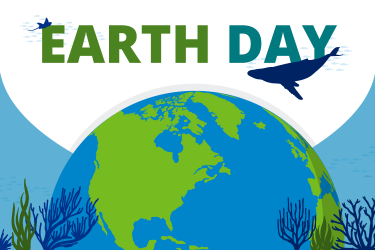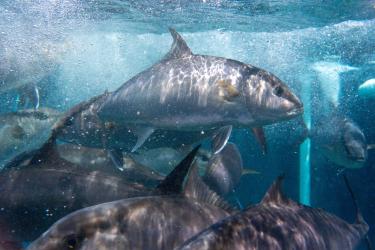To celebrate Women’s History Month, we’re introducing you to the extraordinary women of the National Systematics Laboratory. Dive in and meet Research Zoologist Dr. Martha Nizinski!
Queen of the Deep
“I grew up in the mountains but always loved the ocean,” says Dr. Martha Nizinski, Research Zoologist with NOAA’s National Systematics Laboratory. “When I was younger, I never dreamed of becoming a marine biologist. I didn’t know people actually got paid to ‘play’ in the water.”
Nizinski recalls first hearing about the National Systematics Lab while pursuing her masters at the University of Maryland. “I was in Bermuda taking a fish biology class taught by Dr. Bruce Collette, who was the Director of the National Systematics Lab at the time,” Nizinski says. “My assistantship was ending and I was running out of funding. Bruce mentioned that a position working in the fish division at the National Museum of Natural History would be opening up.” Nizinski applied for the temporary position of Museum Technician in 1986 to take inventory of the fish collections. A year later she accepted a full-time position as a technician in the National Systematics Lab. While working intermittently in that position, Nizinski completed her Ph.D. at the College of William & Mary’s Virginia Institute of Marine Science. She then returned full time to the lab as a Research Zoologist.
Each member of the National Systematics Lab has their own area of focus for their research. Nizinski is the lab’s resident crustacean expert, and on a broader scale she studies the biodiversity of deep-sea coral communities. “By the time I finished my Ph.D., deep-sea corals were becoming an area of interest and research focus for NOAA,” Nizinski says. “I was asked to join a deep-sea coral research cruise that was primarily focused on the fishes associated with these habitats. No one on the science team was studying the invertebrates found on or around these coral communities, so that gave me the opportunity to explore a new area of research.”
Nizinski spent the next several years working on deep-sea coral projects off the Southeast coast and in the Gulf of Mexico. In 2011, she was asked to help get the NOAA Deep Sea Coral Research and Technology Program’s Northeast Initiative off the ground. As the project began to ramp up, the lead researcher dropped out, leaving a void in the team. Nizinski stepped up to fill it.
“It was a little intimidating, because in that moment I went from being a co-researcher to leading the entire project. I had to figure out how to organize budgets, staffing, gear, and ship time, as well as serve as chief scientist,” Nizinski says. “Sometimes you just get thrown into these situations, but that’s when you see what you can really do and what you’re capable of.” By the end of the initiative in 2015, Nizinski had helped to lead successful research cruises visiting more than 30 underwater canyons to collect critical data on deep-sea coral communities.
Nizinski has made such a splash in her career that she even has a species of sea star named after her: Evoplosoma nizinskiae. The species was first collected by the Okeanos Explorer on a research cruise to the Caribbean. It was later described and named after her by Dr. Christopher Mah, a research associate and echinoderm specialist with the Smithsonian’s National Museum of Natural History. “It was an honor and a surprise,” Nizinski says of learning of the name. “Chris [Mah] has always been very supportive and enthusiastic about my research, which I really appreciate."
Smashing Glass Ceilings
Being a woman in science, technology, engineering, and mathematics (STEM) has had its challenges for Nizinski. “I don’t appreciate being told I don’t belong or having my contributions marginalized for any reason. I’m a firm believer in getting the job done even if you have to do it yourself. I’ve worked hard to get where I am today. I have had very few positive female mentors, and because of this I really try to encourage young scientists, both male and female, working in this field.”
For Nizinski, these experiences have emphasized the importance of fostering a collaborative and teamwork-oriented environment in the field of deep-sea biology. “One thing that I’ve learned—and that I really see as the way of the future—is the importance of interdisciplinary and collaborative work. Working by yourself on a problem isn’t the way to go, because animals don’t live in a vacuum,” Nizinski says, reflecting on her long career in zoology. “If you can, try to collaborate with people from as many different disciplines as you can, because that’s the only way you’ll be able to tell a complete story. I do think the younger scientists see the value in looking at things from a broader perspective.”
Despite the obstacles that she has faced throughout her career, Nizinski continues to find her work to be deeply fulfilling and meaningful. She encourages others to follow their passions like she did, even though challenges may lie ahead. “Even when I struggled, I focused on the fact that I was doing what I’ve always wanted to do. My advice to others interested in this field would be that if this is what you want to do, it’s worth pursuing, even knowing that there will be difficulties."






